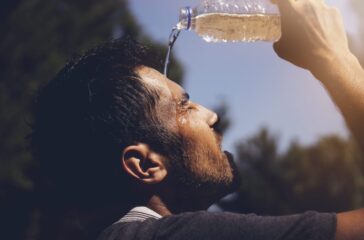Postcard from California: In climate crisis, farmworkers need more protection from heat
It’s been over 20 years since a 24-year-old migrant farmworker named Constantino Cruz collapsed and died following a nine-hour shift picking tomatoes in 107-degree Fahrenheit heat near Bakersfield, California.
Cruz spent four days in the hospital before dying on July 31, 2005. He was the fourth California farmworker to die of heat related illness that month.
Cruz’s death helped spur then-Gov. Arnold Schwarzenegger to issue emergency regulations requiring that on hot days agricultural employers must make sure farmworkers get plenty of water, ready access to shade and rest breaks. The emergency measures were later codified into the first US state law mandating heat protections for farmworkers and other outdoor workers.
Arturo Rodriquez, who at that time was president of the United Farm Workers (UFW), told the Los Angeles Times: “It is tragic that so many farmworkers had to die before action was taken.”
But since California’s landmark action, only three states – Colorado, Oregon and Washington – have passed similar heat safety regulations for farmworkers, and there are no federal safety rules for farmworkers or others who must toil under the sun, meaning most US farmworkers lack legal protection from heat.
The problem is not going away. Average temperatures in the San Joaquin Valley in California are projected to rise by as much as 5 degrees by 2050. And in crop-growing counties across the nation, the number of days considered unsafe because of heat is forecast to nearly double by 2050, according to a University of Washington study.
 EWG
EWG